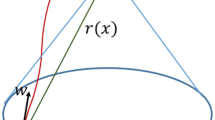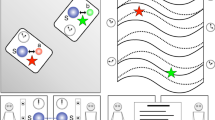Abstract
ACCORDING to the principle of relativity in its most extended sense, the space and time of physics are merely a mental scaffolding in which for our own convenience we locate the observable phenomena of Nature. Phenomena are conditioned by other phenomena according to certain laws, but not by the space-time scaffolding, which does not exist outside our brains. As usually expressed, the laws of motion and of electrodynamics presuppose some particular measurement of space and time; but, if the principle is true, the real laws connecting phenomena must be independent of our framework of reference—the same for all systems of co-ordinates. Of course, it may be that phenomena are conditioned by something outside observation—a substantial aether which plays the part of an absolute frame of reference. But the following considerations may show that the ideal of relativity is not unreasonabfe. Every observation consists of a determination of coincidence in space or time. This is sufncently obvious in laboratory experiments; and even the crudest visual observation resolves itself into the coincidence of a light-wave with an element of the human retina. If, then, we trace the path of adventure of a material particle, it intersects in succession the paths of other particles or lightwaves, and these intersections or coincidences constitute the observable phenomena. We can represent the course of Nature by drawing the paths of the different particles—on a sheet of paper in a two-dimensional case. The essential part of the diagram is the order of the intersections; the paths between the intersections are outside observation altogether, and are merely interpolated. The sequence of phenomena will not be altered if the paper is made elastic and deformed in any way, because the serial order of the intersections is preserved. This deformation of the paper corresponds to a mathematical transformation of the space in which for convenience we have located the phenomena.
This is a preview of subscription content, access via your institution
Access options
Subscribe to this journal
Receive 51 print issues and online access
$199.00 per year
only $3.90 per issue
Buy this article
- Purchase on Springer Link
- Instant access to full article PDF
Prices may be subject to local taxes which are calculated during checkout
Similar content being viewed by others
Rights and permissions
About this article
Cite this article
EDDINGTON, A. Gravitation and the Principle of Relativity. Nature 98, 328–330 (1916). https://doi.org/10.1038/098328c0
Issue Date:
DOI: https://doi.org/10.1038/098328c0
Comments
By submitting a comment you agree to abide by our Terms and Community Guidelines. If you find something abusive or that does not comply with our terms or guidelines please flag it as inappropriate.



